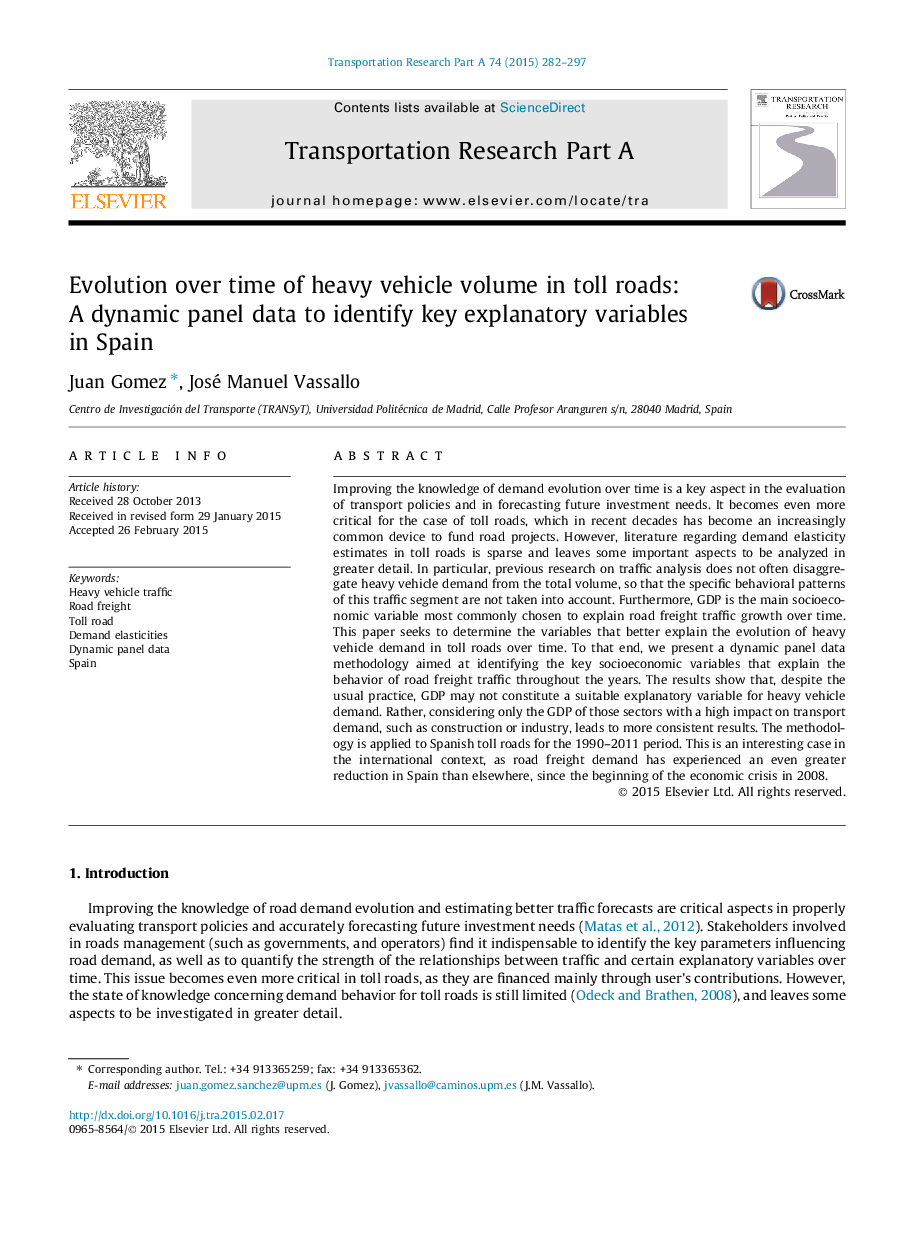| Article ID | Journal | Published Year | Pages | File Type |
|---|---|---|---|---|
| 6781328 | Transportation Research Part A: Policy and Practice | 2015 | 16 Pages |
Abstract
Improving the knowledge of demand evolution over time is a key aspect in the evaluation of transport policies and in forecasting future investment needs. It becomes even more critical for the case of toll roads, which in recent decades has become an increasingly common device to fund road projects. However, literature regarding demand elasticity estimates in toll roads is sparse and leaves some important aspects to be analyzed in greater detail. In particular, previous research on traffic analysis does not often disaggregate heavy vehicle demand from the total volume, so that the specific behavioral patterns of this traffic segment are not taken into account. Furthermore, GDP is the main socioeconomic variable most commonly chosen to explain road freight traffic growth over time. This paper seeks to determine the variables that better explain the evolution of heavy vehicle demand in toll roads over time. To that end, we present a dynamic panel data methodology aimed at identifying the key socioeconomic variables that explain the behavior of road freight traffic throughout the years. The results show that, despite the usual practice, GDP may not constitute a suitable explanatory variable for heavy vehicle demand. Rather, considering only the GDP of those sectors with a high impact on transport demand, such as construction or industry, leads to more consistent results. The methodology is applied to Spanish toll roads for the 1990-2011 period. This is an interesting case in the international context, as road freight demand has experienced an even greater reduction in Spain than elsewhere, since the beginning of the economic crisis in 2008.
Related Topics
Physical Sciences and Engineering
Engineering
Civil and Structural Engineering
Authors
Juan Gomez, José Manuel Vassallo,
